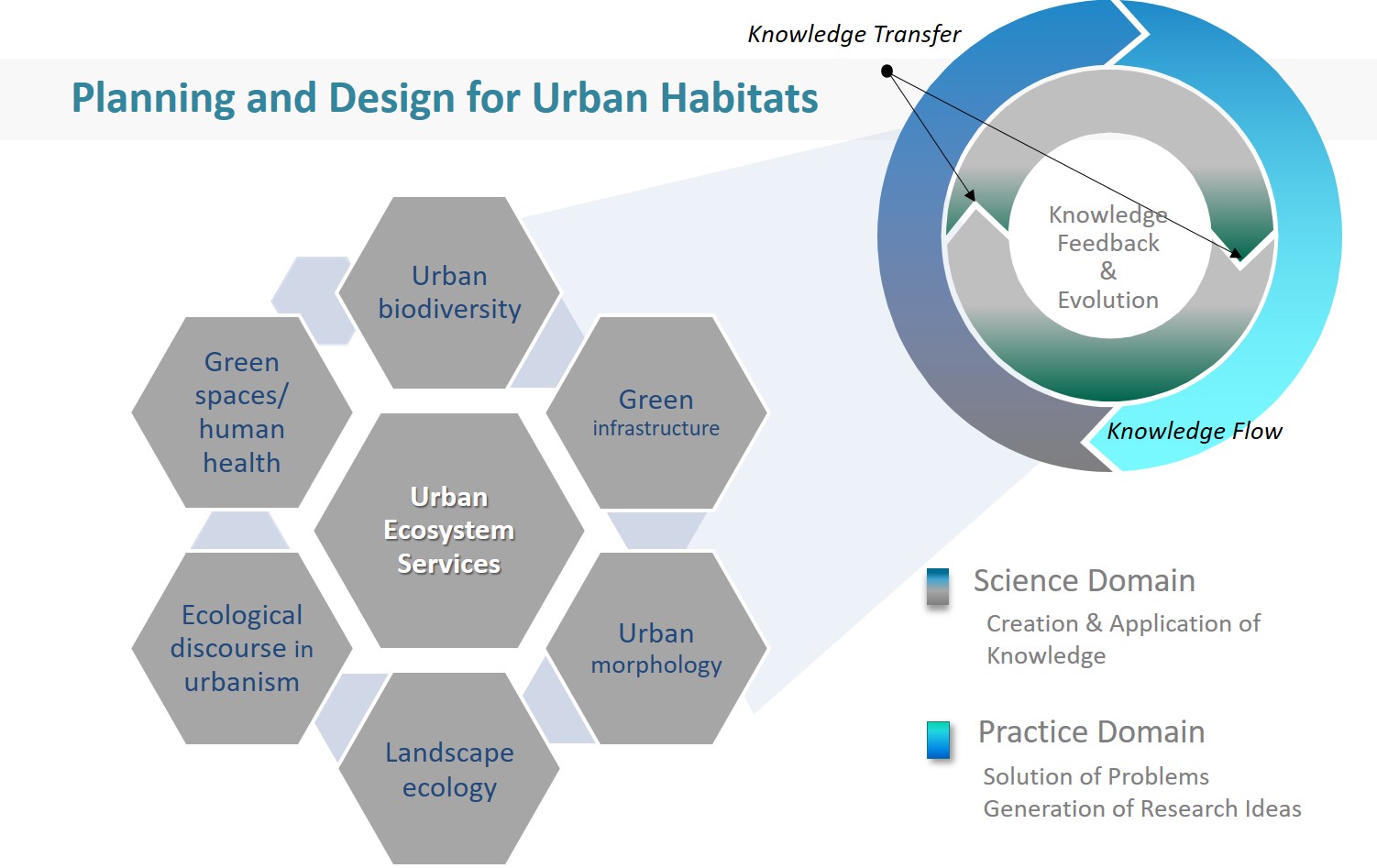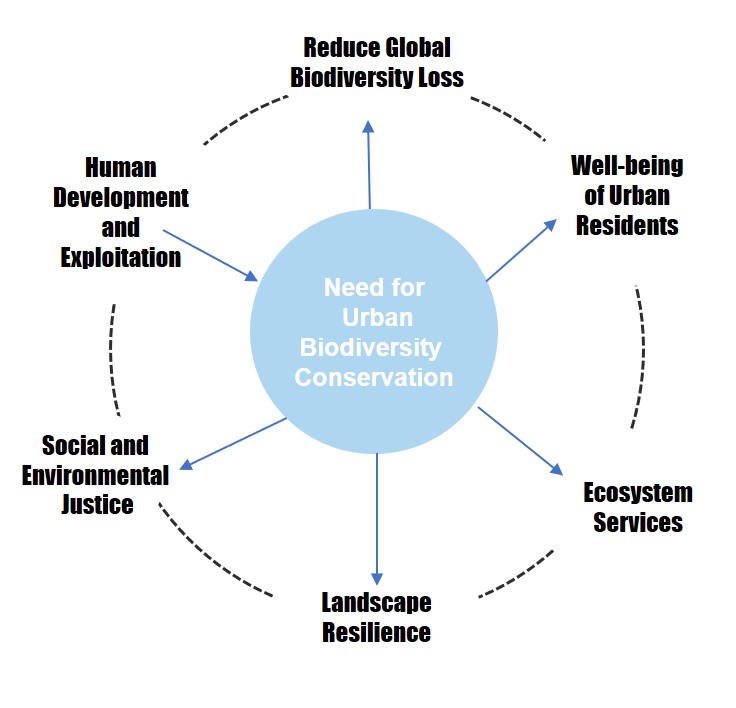#ecosystems #pattern #function # services #landscapeecology #urbanecology #GIS #modeling # connectivity #pollinator #urbanhabitats

Understanding the multitude of benefits that nature provides to cities is important to sustainably manage urban systems. As integral components to sustainable cities and communities, the notions of ecosystem services and biodiversity and the applications in spatial context provide far-reaching implications in planning, designing, and creating healthier urban spaces. Research questions in this line of theme include:
- How contemporary urbanism theories embody the promotion of urban ecosystem services and the design potential for habitat-making that can support urban biodiversity in both urbanizing and deurbanizing areas?
- What physical, social, and environmental drivers catalyze urban habitat design and biodiversity restoration in cities?
- What does characterize urban biodiversity distribution and habitat use in a coupled human natural system?
- What’s the relationship between urban morphology and ecological process?
- What are the planning strategies and performative measures to maximize the potential to transform and integrate vacant and abandoned properties into the green network?
Urban Biodiversity Conservation

Below is a summary of a book chapter entitled, “Operationalizing Urban Biodiversity: A Call for Action in Cities and Landscapes” coauthored by many scholars in U.S. and Canada, as part of the book, “Sustainable Cities and Landscapes” that is anticipated to publish in Routledge in 2021.
Biodiversity is a critical topic for decision-makers in cities primarily for two reasons. First, cities stand to gain from conserving biodiversity because healthy ecosystems can contribute to the well-being of urban residents. Second, cities are crucial players in conservation because they are often located in ecologically significant areas and the socio-economic forces originating in cities drive much of the biodiversity loss both regionally and across the globe. Herein, we also challenge cities to go beyond the goal of preventing harm to ecosystems and biodiversity, and encourage them to enhance biodiversity. To achieve these ends, we argue that a clear standard is needed for integrating biodiversity concerns with other socioeconomic goals in urban environments so as to strengthen the connection between biodiversity and human wellbeing, social equity, and landscape resilience. Despite the potential benefits that integrating biodiversity concerns can have on urban conditions, biodiversity is not typically central to city decision-making, planning, and management. Some of the many challenges that decision-makers face when addressing biodiversity concerns include the belief that biodiversity is not an urban issue, the need for metrics for biodiversity that can stand alongside more hegemonic measures, and the lack of an interdisciplinary understanding of how biodiversity influences spatial and socio-cultural characteristics. We discuss each of these challenges and provide examples as to how cities in the Pacific Rim are attempting to address them. To address these challenges, scientists and decision makers need more than an objective definition of urban biodiversity with which to incorporate sound science into their collaborative work. They need a normative standard for urban biodiversity that can be used to foster pluralistic decision-making about what aspects of biodiversity meet the criteria of jointly serving ecological and human-centered needs in urban areas. To this end, we argue that a new standard of biodiversity needs to be applied in urban management and planning. Finally, we encourage urban biodiversity planners, managers, and designers to utilize leverage points that have the power to integrate goals from several disciplines alongside those of biodiversity conservation. We also call for better dialogue between researchers, practitioners, and laypeople to ensure that operationalized approaches are socially equitable, locally appropriate, practical, and scientifically sound, and that scientific research on the topic is more actionable.
Roles of Green Spaces on PM 2.5 Concentration

This study aims at identifying the relationships among various variables that influence city-wide PM2.5 pollution levels in the six largest cities in Texas. The variables were categorized into three groups for statistical analysis: 1) urban components (city land area, urban population, population density); 2) green space components (coverage, percentage, connectivity, and shape); and 3) meteorological factors (ambient temperature and wind speed). To identify the relationship between meteorological features and daily PM2.5 concentration, we used descriptive statistics for each city and all six cities combined. A bivariate statistical test was used to examine the correlation between urban and green feature components and city-level PM2.5. Lastly, the hierarchical linear modeling (HLM) technique was used to estimate the effects of the meteorological features and urban and green space variables on the daily particle pollution level, which accounts for the clustering of particulate measurements within cities. The results showed that city-wide particulate pollution has significant, positive associations with temperature, city land area, population, population density, and shape complexity, and negative associations with wind speed, amount of green spaces, tree canopy, and connectivity of green spaces. It is notable that there are negative synergies in the cities with higher population density where there was a greater increase in the pollution level. Similarly, the cities with less green spaces exhibited a modest green space mitigation effect, whereas the cities with more green spaces had only a gradual increase in the pollution level even if it increased due to a higher temperature. This study indicates that both the quantity and spatial configuration of green spaces can play an important role in managing fine particulate matter in large cities.
Related article: Click here to download PDF